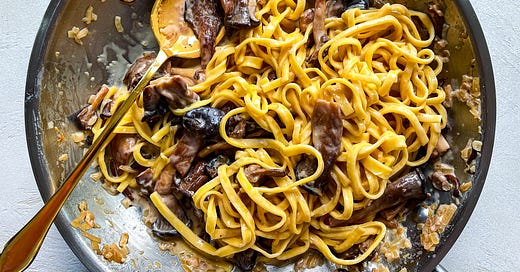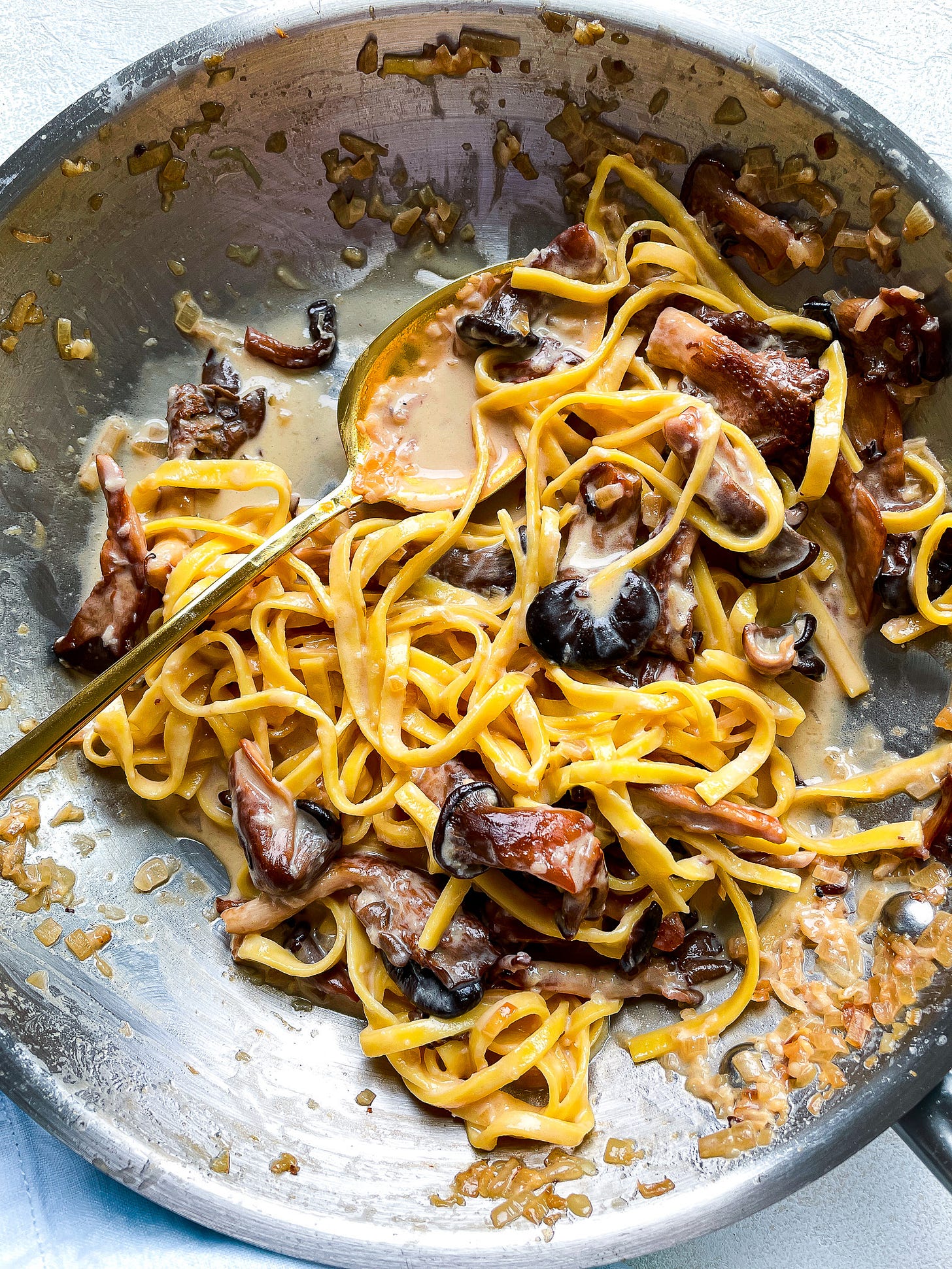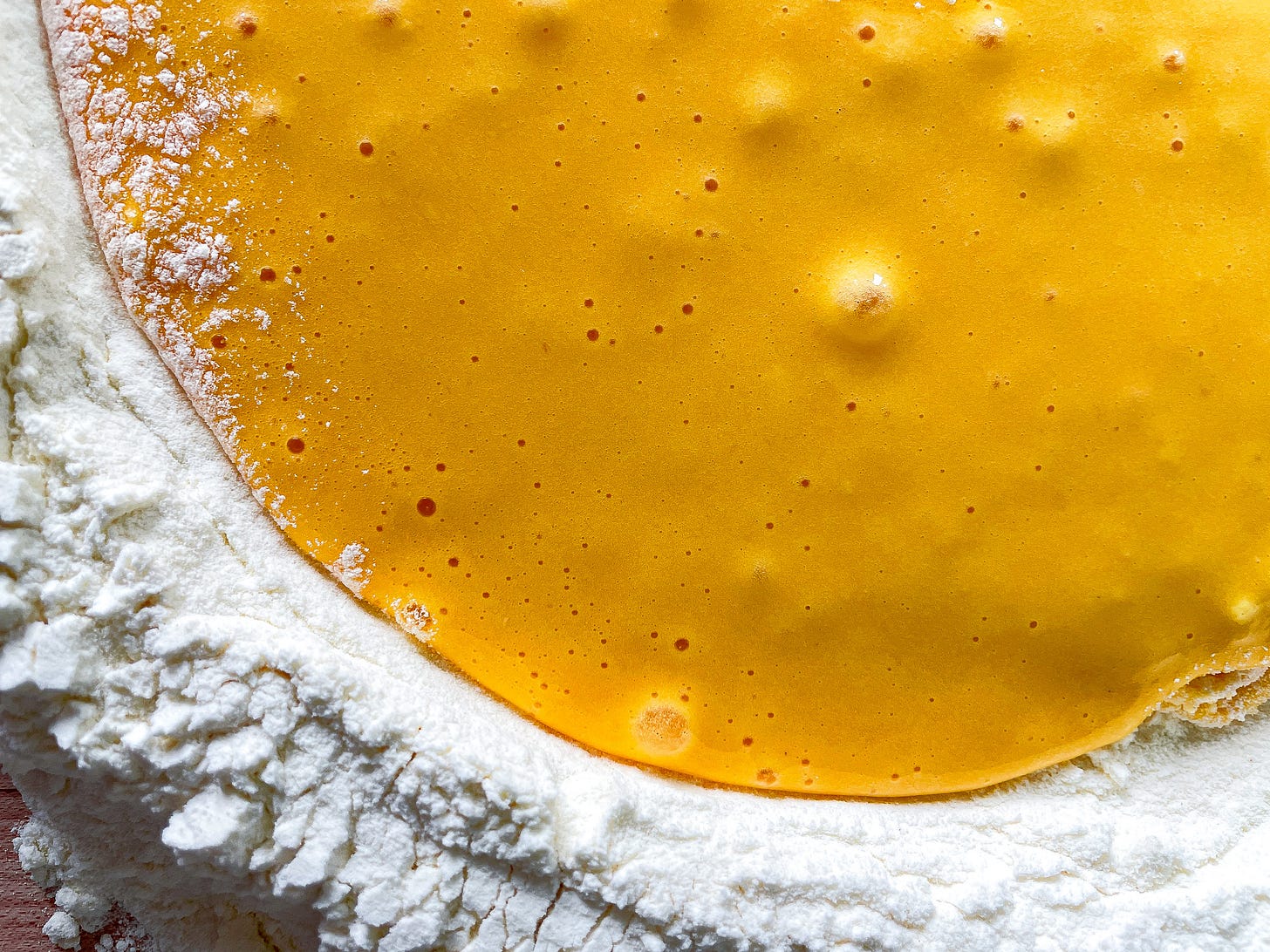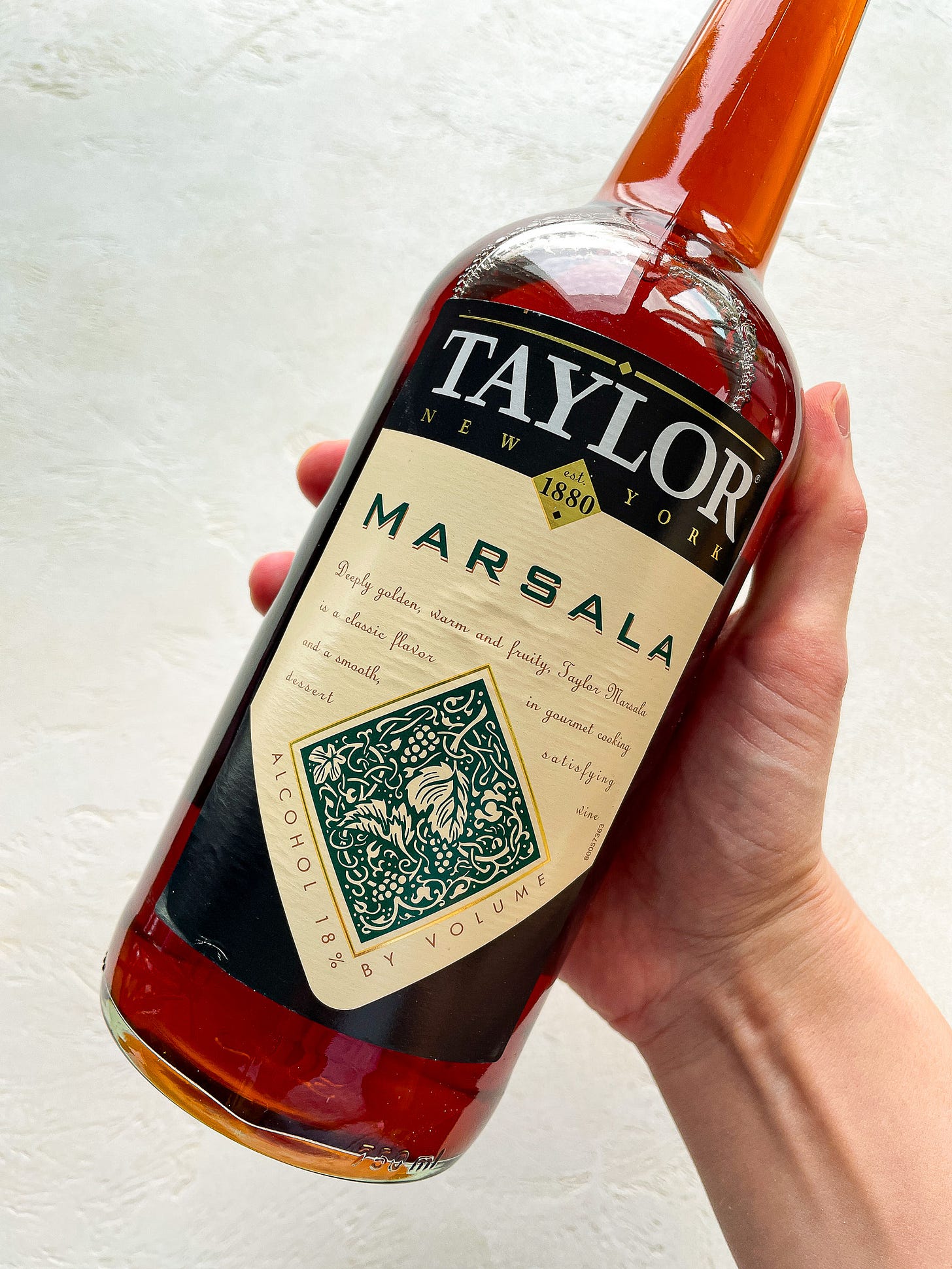When I think “holiday pasta,” the first word that comes to mind is fancy. Something intricate and laborious, like tortellini in brodo and agnolotti del plin, or served with expensive delicacies like truffles and lobster. But fancy doesn’t have to mean difficult, and it doesn’t have to break the bank either. Introducing our eighth Pasta of the Month, and the final installment of the year: tajarin.
Tajarin are thin and delicate pasta ribbons from Piedmont, a gem of northern Italy at the foot of the Alps that neighbors France and Switzerland. The region boasts stunning scenery—lakes, mountains, plains, castles—and it’s also a treasure trove for food and drink lovers. Staples like Nutella and Ferrero Rocher hail from Piedmont, as well as Barolo wines and white truffles (okay, we are getting a bit fancy). Here, like in most northern regions of Italy, livestock is abundant, so butter and lard are the fats of choice, and meats (cured meats, specialty beef, game) and cheeses (particularly gorgonzola) are common. We’re talking rich, stick-to-your-ribs mountain food.
Rice and polenta are far more common in Piedmont than pasta. But even in its scarcity—or perhaps because of it—you’ll find some truly remarkable dishes. Fresh egg pastas, particularly stuffed pastas, are customary, including the aforementioned agnolotti del plin, tiny “pinched” parcels filled with braised meat or cheese. Various types of gnocchi, including my favorite cold-weather dish, gnocchi all’Ossolana—potato, squash, and chestnut dumplings—are also a core part of Piedmontese cuisine. And, of course, there’s tajarin.
It would be easy to mistake tajarin for other thin-cut pastas like tagliolini. And you wouldn’t be entirely wrong, because tajarin is local dialect for tagliolini (or tagliarini, meaning “small cuts”) and look pretty much exactly the same. But what sets tajarin apart is the dough, which is typically made with a much higher proportion of egg yolks—at least 20 per kilo of flour. The yolk-rich dough is rolled into a thin sheet, then cut into the finest possible strands, sometimes as narrow as 1mm. The result is an ultra-tender, extra-luxurious, golden tangle of pasta.
You’ll see tajarin served in a variety of ways. When the pasta first rose to prominence in the 16th century, it was paired with a hearty poultry or game ragù, often including offal. Now, preparations include simple butter sauces, some infused with sage, others elevated with white truffles (particularly in the city of Alba) or fresh porcini mushrooms—the latter two of which inspired today’s recipe. But before we get there, there’s one traditional dish that piqued my curiosity, and that’s tajarin with a local sausage called salsiccia di Bra.
What makes salsiccia di Bra so special starts with the cow. In Piedmont, there’s a breed called “Razza Piemontese” that’s known for having less fat, less cholesterol, and more protein than typical beef. The meat is so tender that it’s often eaten raw, or used to make Bra sausage (which is also eaten raw). The recipe for salsiccia di Bra dates back to the Middle Ages. Today you might find it made with beef and pork, but historically this sausage only contained beef. And that’s why I find it so interesting: salsiccia di Bra has Jewish origins.
Just a short jaunt away from Bra you’ll find Cherasco, home of a historic Jewish community. The Jews of Cherasco would visit Bra to buy food and other supplies, then bring those provisions back home. But because many Jews don’t consume pork due to kosher dietary laws, the butchers of Bra started making all-beef sausages—packed with that super lean, tender meat—especially for them. So prized did salsiccia di Bra become that a few centuries later a royal decree was passed to protect its production, and now it cannot be made anywhere else. Even more extraordinary is that Bra sausage remains the only veal-based sausage legally allowed in Italy: In 1847, King Carlo Alberto of Savoy (modern-day northwest Italy) banned the production of beef sausages—all except salsiccia di Bra. (Legend has it they were a staple of the royal diet.)
When I first started brainstorming ideas for how to serve my tajarin, I wanted to honor this Jewish heritage by making a beef sausage ragù. But it quickly became clear that it would lack what makes the traditional dish so unique. Not to mention I wanted to create something quick(er) and eas(ier) without sacrificing sophistication or flavor—and I wouldn’t usually categorize sausage ragù as “quick.” Which brought me back to my trusty culinary companion, the great keeper of sophistication and flavor: mushrooms.
I am not exaggerating when I tell you this is one of the best recipes I’ve ever developed (I do not say this lightly; I cringe at compliments). It’s a dish that both my husband and I agreed could easily pass for restaurant fare. I don’t attribute this to my skill, but rather to the merit of simplicity: a few good, well-balanced ingredients are all you need to make great food. One of those ingredients is Marsala, a fortified wine not from Piedmont, but all the way down south in Sicily. At first I liked the sound of “mushrooms and Marsala”—sometimes these things just get stuck in my head—but the two are no strangers, having long been dear friends in the Italian-American classic, Chicken Marsala. As someone who follows kosher dietary laws, I’m not sure I’ve ever eaten Chicken Marsala, but after making this dish, I surely understand the appeal.
Fortuitously, as I started drafting this recipe,
of published a newsletter all about Marsala. I highly recommend reading her post, which sums up its merits so beautifully:Why do I like cooking (and baking) with Marsala? Because it adds depth to stew and sauce. But it’s more than that. It has an enticing, rounded, dried fruit quality, and by dried fruit I mean figs, golden raisins, and apricots, but also nuts, which are called “frutta secca” in Italy. Good Marsala brings delicious complexity to both savory and sweet foods.
Needless to say, this has “holiday pasta” written all over it, for a fraction of the effort and the cost.
Tajarin with Mushrooms & Marsala
Serves 2






